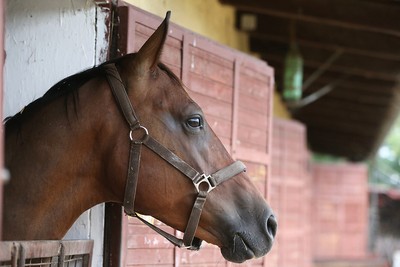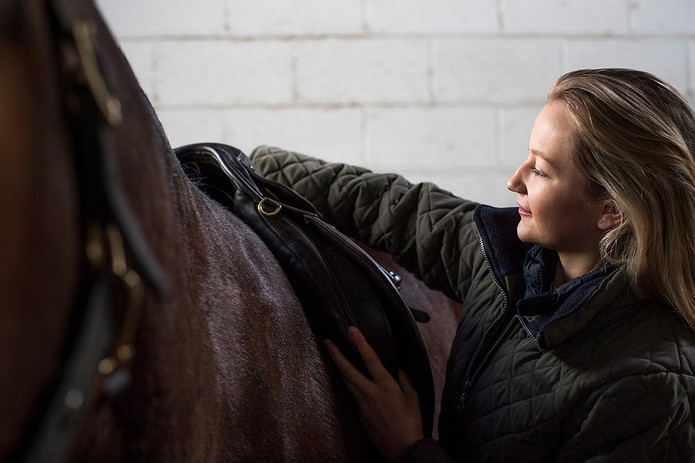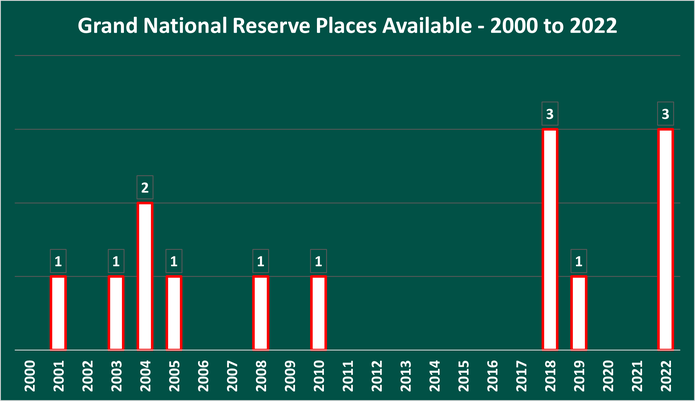 For many in National Hunt racing, the Grand National remains the pinnacle of the sport.
For many in National Hunt racing, the Grand National remains the pinnacle of the sport.
Of course, many of horse racing’s biggest prizes are to be found at the Cheltenham Festival, but some owners and trainers are focused solely on the Grand National – that’s why they try to turn their horses into staying powerhouses capable of handling the size and variety of jumps on the Aintree course.
It’s why so many horses are entered by their connections into the Grand National field – for the 2021 renewal, for example, a staggering 103 entries were made at the initial declaration stage.
These days, the Grand National field is capped at 40, and so less than half of those entered actually take to the Aintree turf. It’s the job of the handicapper to cut the entries down, and they select the 40 they feel are best placed to take on the challenge.
But the British weather being what it is, an unseasonably warm and dry spring – or a late monsoon-like downpour – can see connections declare their horse to be a non-runner….at which point, the Grand National reserves got their chance to shine.
This system began in 2000 but was stopped after the 2022 edition.
What Were Grand National Reserves?

Consider the Grand National reserves as like substitutes in football: they got the nod when another horse was declared a non-runner.
That could have happened days in advance of the April showpiece or the day before the race, so those tasked with managing each reserve needed to be on their toes in case they get the call up.
There were typically four reserves selected, and these were given a defined order by the handicapper – so, the first reserve would enter the field first should a declared runner withdraw, and then the second and so on.
You would often see reserves listed in the Grand National betting odds too, although anybody backing them was best served to seek out ‘non runner, no bet’ offers so that they were protected should their selection not make it to the start line.
Why Were Grand National Reserves Introduced?

Quite simply, the organisers of the Grand National want the race to contain 40 horses – no more, no less.
The reserve list was designed to achieve that, with non-runners easily replaced by those waiting in the wings, who were given their own rating by the handicapper (usually they were the bottom weight).
A reserve could be called up any time from when the final field was announced early in April, up until 1pm on the Friday before the Grand National.
Why Was the Reserve System Scrapped?

The weights for the Grand National are based on the rating of the horse prior to the race running and are normally announced towards the end of February. Once this announcement has been made, the weight carried by that entrant will not change, even if their rating does. The horses which make the cut for the race are the top 40 rated (and weighted) entrants, with horses tied for ratings at the bottom of the list balloted in or out or been given a reserve slot.
In a handicap race, the top weighted horse is given the number 1, with the racecard number increasing as the weight decreases. Therefore, the smaller the race number of a horse, the higher rated they are and the more weight they will carry. The reserve horses tended to be at the bottom end of the ratings and weights, but when a horse dropped out, they would simply take the number of that runner. This created a problem in that even though these horses were carrying the least weight, they could be given a low racecard number, even number 1, which would indicate they were a top rated entrant, even though they wouldn’t carry that weight.
This confusion let to the reserve system being discontinued after the 2022 running of the race.
How Often Did Grand National Reserves Get Into the Race?
Because of the prestigious nature of the Grand National, unsurprisingly owners weren’t too keen to declare their horses a non-runner for the extravaganza.
So there were only been fourteen occasions between the year 2000 and 2022, when the reserve list was introduced, in which a reserve was called upon:

In both 2004, 2018 and 2022, the condition of the Aintree track led to multiple reserves getting a chance to shine. In the former, an unseasonably dry spring left the course with a going rating of good, and the anticipated speed of the race saw Tyneandthyneagain and Red Striker withdrawn.
In 2018, a series of heavy rain showers left the Aintree track in a heavy condition, and that saw three reserves called up to the race – one of them, Walk in the Mill, was then withdrawn himself the day before the Grand National!
How Did Grand National Reserves Perform?
For the most part, Grand National reserves performed in a manner that can best be described as mediocre, as shown in the table below.
Grand National Reserves Finishing Positions – 2000 to 2022
| Year | Horse | Position | Trainer | Jockey | SP |
|---|---|---|---|---|---|
| 2001 | Merry People | Unseated | John Queally | Garrett Cotter | 66/1 |
| 2003 | Bramblehill Duke | Fell | Venetia Williams | Brian Crowley | 200/1 |
| 2004 | Bramblehill Duke | Unseated | Venetia Williams | James Davies | 200/1 |
| 2005 | Native Emperor | Unseated | Jonjo O’Neill | Dominic Elsworth | 100/1 |
| 2008 | Ardaghey | Fell | N. Twiston-Davies | David England | 100/1 |
| 2010 | Royal Rosa | Unseated | Howard Johnson | Wilson Renwick | 66/1 |
| 2018 | Thunder And Roses | Pulled Up | Mouse Morris | J J Slevin | 33/1 |
| 2018 | Delusionofgrandeur | Pulled Up | Sue Smith | Henry Brooke | 50/1 |
| 2018 | Walk In The Mill | Non Runner | Robert Walford | – | – |
| 2019 | Just A Par | Pulled Up | James Moffatt | Aidan Coleman | 100/1 |
| 2022 | Romain De Senam | 10th | David Pipe | Philip Armson | 125/1 |
| 2022 | Commodore | 12th | Venetia Williams | Charlie Deutsch | 33/1 |
| 2022 | School Boy Hours | Pulled Up | Noel Meade | Sean Flanagan | 33/1 |
In 2001, one of the bookmakers’ favourites – Inn at the Top – was withdrawn due to the putrid racing conditions, which saw just four horses complete the course. The reserve, Merry People, unseated jockey Gareth Cotter at the famous Foinavon fence.
In 2003, Bramblehill Duke got a chance to shine as a late replacement for Kingsmark, and the 200/1 shot gave a good account before falling at fence number two on the second lap of the track.
A year later, Bramblehill Duke was again a late call-up – this time he unseated rider James Davies at Becher’s Brook, and in 2005 Native Emperor – in for Turnium – unseated Dominic Elsworth at Valentine’s fence.
The 2008 Grand National saw Ardaghey replace Opera Mundi, who was withdrawn on the Friday before the race, and Nigel Twiston-Davies’ horse fell at the fourth fence.
In 2010, Gordon Elliott did the noble deed of not entering his first reserve, Silver Birch, so that his chum Graham Wylie could enter second reserve Royal Rosa in place of the withdrawn Abbeybraney. The horse unseated Wilson Renwick at the fourteenth fence.
In 2018, a record three reserves – Thunder and Roses, Delusionofgrandeur and Walk the Mill all got the nod to replace Minella Rocco, Vicente and Beeves respectively. Walk the Mill was then declared a non-runner on the Saturday morning, while the other two were pulled up despite lasting more than half of the race.
And in 2019, Just a Par replaced the injured Mall Dini in the 40-horse field. He was pulled up just prior to the 28th fence.
The 2022 race saw not only the most reserves competing with three, but also the first reserves to finish the race. David Pipe’s Romain De Senam finished tenth. Venetia Williams’ Commodore finished two places further back in twelfth, whilst the third reserve, School Boy Hours, was pulled up on the first circuit.